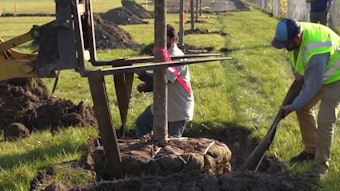
Growing grass in the shade is a problem for which there are no easy answers.
Grass is a full-sun plant and, when planted in shaded areas (defined as a site that receives less than 4 to 5 hours of direct sunlight daily), it performs poorly. The filtering effect of trees significantly reduces the amount and quality of light grasses receive. This has an adverse effect on photosynthesis, the process that produces energy needed for the grasses to grow.
What we see from this effect are grasses that are thin, weak, and have a lower tolerance to disease, drought and wear stress. Typically, grass planted in the fall with too much shade will do well until about June. By July, heat, humidity and the lack of sun all have an impact adverse to the health of your grass.
There are a few management practices that may help reduce the problems associated with growing grass in shade. Select shade-tolerant grasses when possible. Cool-season grasses like fine fescues (chewings, red, sheep and hard fescues) have excellent shade tolerance, but are not tolerant of high temperatures. Traditional tall fescues can tolerate high temperatures, but are less tolerant of shade. Warm-season grasses have even less to offer in shade tolerance. Bermuda grass has extremely poor shade tolerance while Zoysia cultivars (i.e., El Toro, Cavalier) can tolerate light shade, but tend to die out in a few years.
To read the full original article, please click here.





























